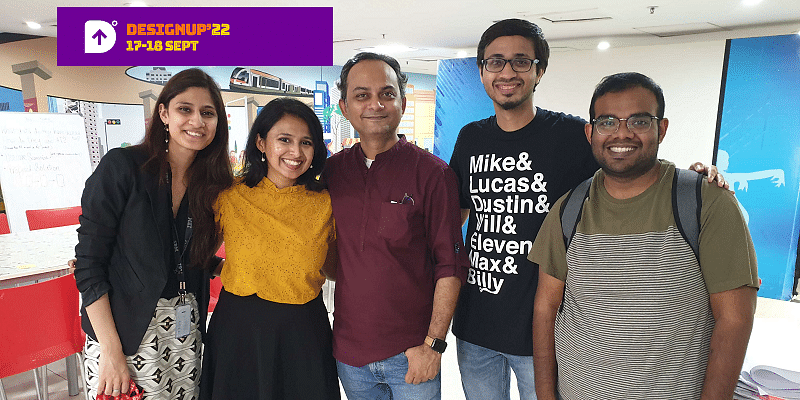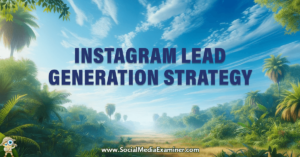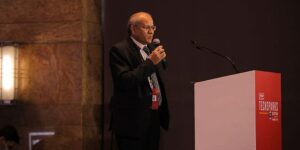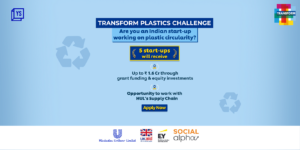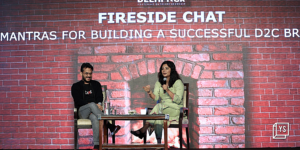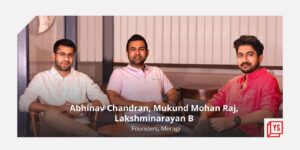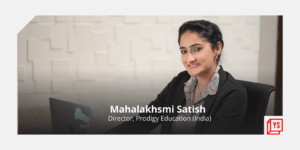Rasagy Sharma is an information designer, data artist, and sketchnoter. He is currently product designer at Sundial. A graduate of NID and BITS Pilani, he is also an Adjunct Assistant Professor at IDC, IIT Bombay.
Rasagy is speaking at the DesignUp 2022 conference in Bengaluru on September 17-18. As media partner, see YourStory’s earlier coverage of DesignUp conferences and sessions from 2021, 2020, 2019, 2018 and 2017.
For a decade, Rasagy has worked at the intersection of data and design. Earlier, he was the Principal Information Designer at Gramener, where he applied data storytelling to business problems. He also creates art using data and code, and supports design communities.
See also YourStory’s Book Review section with takeaways from over 340 titles, and our d-Zen (‘Design Zen’) section for more design resources.
Rasagy joins us in this interview on data storytelling, learning from failure, community involvement, startup tips, and the impact of design.
Edited excerpts below:
YourStory (YS): In a world of increasing information overload, how can data storytelling come to the rescue?
Rasagy Sharma (RS): Data storytelling applies data representation practices, places it in the reader’s context, and focuses on driving action.
My favorite example of this has been the visualisation of Gun Deaths in US by Periscopic. This piece does justice to individual stories, along with showing several insights from this polarizing topic.
In the pandemic, I found the use of the phrase “flatten the curve” a great example of how data storytelling takes a complex behavior and simplifies it for everyone. I’ve also found Reuters consistently create stellar data stories, and their COVID dashboard had several excellent examples of this, from generating key insights on the top to mapping how different countries are going through/past a peak in cases.
YS: That’s quite a creative streak you have–from product metrics to data storytelling! How did that come about?
RS: Thanks, this happened quite serendipitously! I went to BITS to become a programmer, found myself designing data visualisation by chance, and decided to stick with it as I transitioned roles.
My first full-time role—as the first designer at Capillary—introduced me to the idea of dashboards, and inspired me to pursue a Masters in Information and Interface Design at NID. Since then, I’ve worked on designing products where representing data was crucial, at organisations like Microsoft, Barclays, Mapbox, and Gramener.
Recently, building Sundial helped me get a deeper understanding of product analytics. I finally find myself connecting the two aspects of blending data and design: using data to drive design decisions (product analytics) as well as representing data and narrating insights (data storytelling).
YS: What are your thoughts on the trends of productisation of services and the ‘as-a-service’ model for products (eg. SaaS)?
RS: I find the SaaS model valuable for both customers and product builders. This has helped open up the market to smaller, niche products that solve a specific problem (and have lower/pay-as-you-use pricing) instead of paying one-time large upfront fees.
For folks building these products, it has made it easier to build something small, get enough adoption, and continuously deliver improvements to customers that was much harder earlier.
We can see this by following the overall trend moving away from ownership of products (car, albums cassettes, movie DVDs) to models that allow you on-demand access to these (ride hailing, music and movie streaming).
YS: What have been some of your experiences with failure and mistakes? How does a creative person learn, cope, and move on?
RS: I’ve been grateful that NID instilled an internal voice for self-critique, along with teaching us to separate the critique of the work from the individual. I’ve gradually learned to acknowledge our messy reality where design and designers play only a tiny role, and there are several moving parts that lead to the success or failure of a project/product.
So as a creative professional, I’ve constantly tried to take a step back once a project is done, let it grow or fail, and reflect on what I can do better the next time. I’ve enjoyed working on many projects that never saw the light of day, and I also often look back in dismay at all the gaps in my old work.
Having a select group of peers who keep you grounded, give you honest critique, and help you see the big picture has been essential for me to stay sane as a designer.
YS: Many of our readers are tech startups. What is your advice to them on when they should start seriously integrating UX in their journeys?
RS: Short answer: the sooner, the better! At Sundial, along with having Julie Zhuo as a designer and co-founder, we’ve had a strong design team from the start.
This has been crucial in making the whole company value good design, think deeply through problems, and always keep customers at the heart of what we’re building.
I’ve also seen startups with designers in early stages get deeper insights on the biggest pain points to solve (through just enough user research), as well as receive early feedback on the product direction (without fully building the product). This can be a great differentiator in a crowded market.
YS: Is there a particular age when people are most creative, or can the creative bug strike you at any time?
RS: In my opinion, there is no “golden age” to be creative, but people often feel kids are more creative because they are neither constrained by reality, nor fear judgment from others.
I personally believe creativity to be a skill that can be practiced and honed, and I don’t subscribe to thinking of it as a talent or trait that only some are born with. The more you practice (lateral or divergent thinking, exposing yourself to new ideas), the easier it is for creativity to ‘strike’ you!
YS: How did the pandemic affect your work and other activities? How did you cope?
RS: The pandemic shook me and my partner quite a bit. Culturally, we don’t talk about death, grieving, and the impermanence of life, so the early part of the pandemic was spent being extremely anxious, constantly dealing with an existential crisis, and struggling to be present for our loved ones.
Initially, I contributed in whatever way possible: at Gramener, we worked closely with state governments and helped them analyse infection spread and testing infrastructure. I also helped with small tasks like creating multi-lingual myth-buster posters for government medical institutions.
Later in the pandemic, I collaborated with Project Fuel to map stories of hope and wisdom from around the world. During the second wave, DesignUp for a Cause helped raise Rs 70 lakh by doing a virtual conference, and I volunteered for planning and facilitation.
The pandemic brought a lot of things into perspective, and I loved Gandalf’s quote from LoTR: All we have to decide is what to do with the time that is given us.
YS: Seeing urban pollution, drought, and flooding these days, what are your thoughts on redesigning habitats and lifestyles?
RS: I understand very little of how urban cities are–or aren’t–designed, so I don’t have deeper insights on this.
In general, I don’t think such problems have easy solutions (especially not anything just tech or design can solve), and we need a system thinking approach along with a good understanding of incentives for different stakeholders to bring change. I hope to spend more time listening and understanding before I can form thoughts on what can be done next.
YS: What new projects and activities are you involved in these days?
RS: Most of my time is spent on design explorations and a few fun experiments at Sundial. Outside of work, I’m excited about running unconferences for DesignUp this year, teaching data visualisation and design at NID and IDC IIT Bombay, and helping a small creative coding community (CC Sante!) host monthly meetup.
YS: What are five must-read books about UX, design and ethics that our audience should have?
RS: Broadly, How Design Makes the World by Scott Berkun and Ruined by Design by Mike Monteiro are two great books for every designer to read (and get a balanced perspective).
Specific to information design, I highly recommend Storytelling with Data by Cole Knaflic, and Resonate by Nancy Duarte for great, practical advice on visualisation and storytelling.
And Man’s Search for Meaning by Viktor Frankl, both for understanding how hope sustains in the darkest of times, and for his work on logotherapy and finding a purpose in life.
YS: How can industry and academia work together to increase ‘design quotient’ in society? What are some of your activities in this regard?
RS: As the boundaries of academia blur through cohorts, influencers and several formal institutes talking about design, I think there is an abundance of introductory information to consume.
What’s missing is more spaces (conferences, meetups, publications) for those in the industry to share, and a long-term view for growing design maturity in the society. My efforts are currently limited to teaching at a few design institutes and speaking at a few conferences, but I hope to find more ways to get others excited about data and design.
YS: If you were to write a book now, what would it be about?
RS: It would be a compilation of how designers in different fields use data in their design process. It’s interesting to see how a data journalist, dashboard designer, and product designer use data in very different ways in their work.
YS: What is your parting message to aspiring entrepreneurs, writers, and designers in our audience?
RS: I hope to see more folks take interest in understanding design, and would love to read more thoughtful articles, critiques, and reflections on how design is transforming in India!

